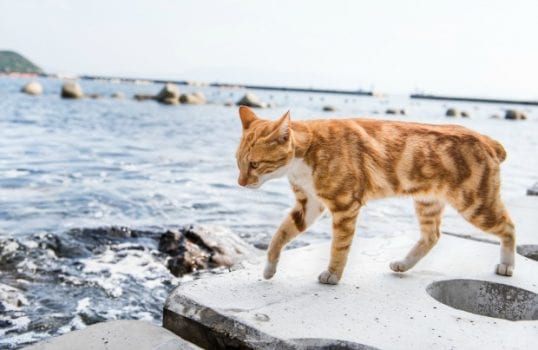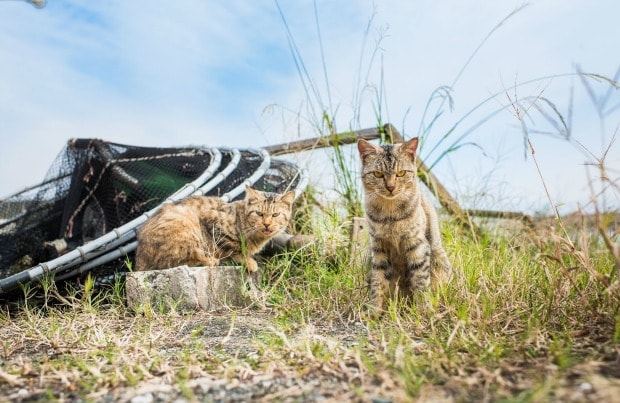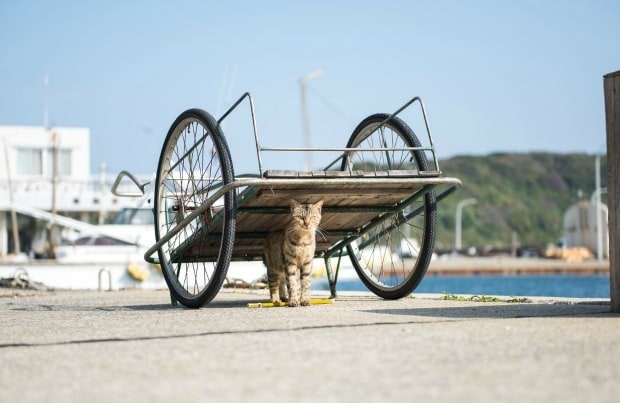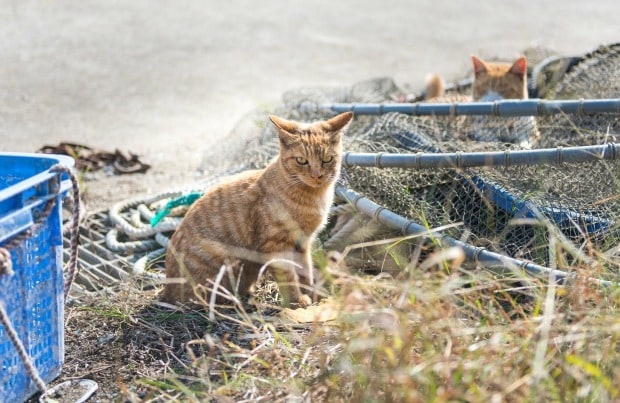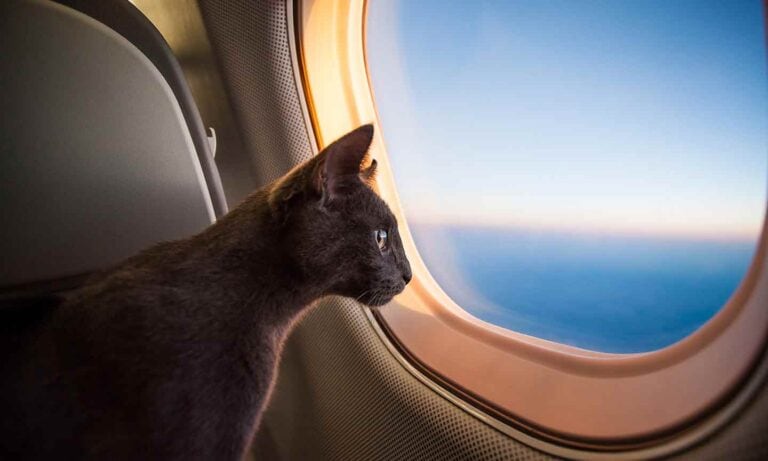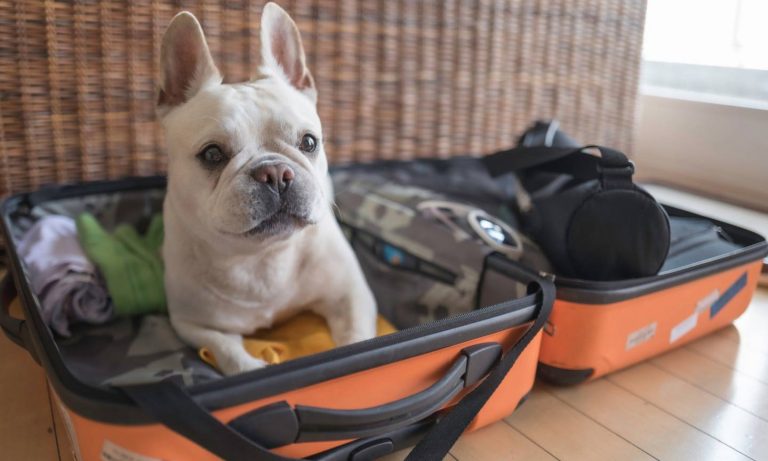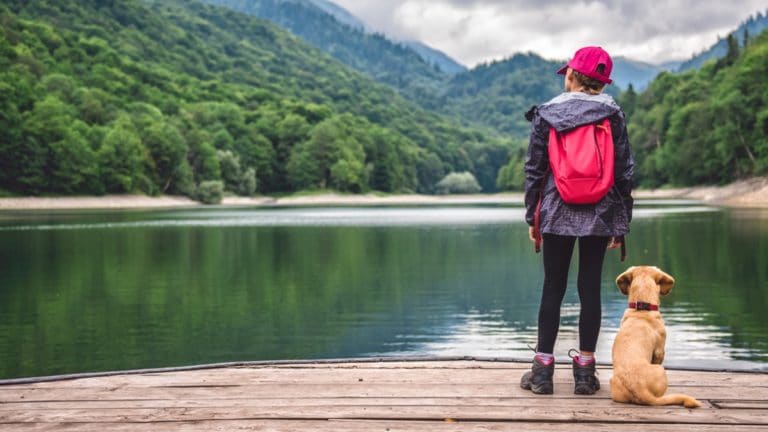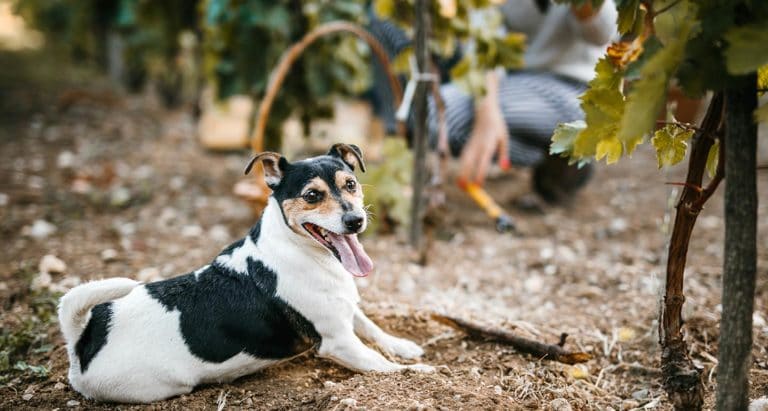A small island bursting with friendly felines sounds almost too good to be true if you’re a cat lover. A few years ago, the media began to circulate information about Japanese “cat islands,” and the story caught like wildfire for travelers and cat enthusiasts. On social media, cat islands are commonly referred to in utopian terms—a dream destination. As a full-time rescuer and cat advocate, the idea gave me pause. But with an open mind, my partner and I visited Ainoshima, a cat island in Fukuoka, this fall.
Japan has a dozen or more “cat islands,” all remote fishing villages inhabited by a small number of residents and a large population of stray cats. While each is slightly different, they all face similar issues. Because the cats living on the islands are not spayed or neutered, the feline population is constantly increasing. In addition, these islands have become increasingly popular destinations for foreign tourists—a trend that presents challenges for residents, both human and feline.
We took a morning ferry from Shingu Port, hoping to spend the day photographing cats and learn more about the cat-island phenomenon that has captured the imagination of so many. We arrived early and boarded with about three dozen other visitors, comprised of an even mix of fishermen and tourists. Earlier this year, Ainoshima’s port upgraded from a small boat to a larger ferry that can accommodate groups of feline fans. We arrived at the island and were immediately greeted at the dock by several cats. As tourists began to take selfies and squeal with excitement, I knelt to examine each of the cats and assess the situation.
Right away I confirmed what I had feared—none of these cats had received veterinary care, and breeding was rampant.
Roughly one-third of the cats were young kittens struggling with untreated upper respiratory infections. Eyes and noses crusted, the kittens huddled together on the warm pavement of the only road on the island, many struggling to breathe. The adults looked decently healthy, though unsterilized; they mated loudly on the shore, and pregnant females approached for food and affection. There seemed to be a rapidly growing young population, with high risk of mortality for the youngest and most vulnerable, but enough food to sustain those who made it to adulthood. I sat wiping the crust from the kittens’ faces, and watching as tourists stepped past and smiled for photos.
Interestingly, I also noticed that the vast majority of cats on Ainoshima had very short, stubby tails. The bobtail is a recessive genetic mutation that does occur in some Japanese street cats, but due to a lack of genetic diversity in an island setting, the whole colony seemed to exhibit this genetic anomaly. The cats were beautiful, interesting characters, and certainly seemed happy enough to have visitors, but it all felt unsettling to me.
The local residents of Ainoshima never set out to develop a tourist attraction, and so there is no sense of urgency about investing resources into treating and sterilizing the community’s cats. Their perspective, summarized to me by a local, is that it’s best not to intervene with nature—to allow the population to decline through illness, hunger, and kitten mortality. The community has chosen to take a hands-off approach, asking visitors not to intervene with medical support and not to feed the cats. Still, more tourists arrive, more food is inevitably fed, and more animals are born without a system in place to support them.
As an animal lover, I understand the desire to run away to a magical land full of cats, but found it fascinating that so few people seemed concerned about the welfare of the animals on the island. The novelty and entertainment value of the island seemed to obscure the welfare issues at hand. In a world of smartphones and social media, it’s easy enough to crop the sad parts out of a photograph and present it as utopia. But is that an accurate characterization of the island?
It’s a sensitive situation—balancing the desires of the local residents, the increasing interest of tourists, and the needs of the cats. While a hands-off approach is the current strategy, the fact is that human intervention is already impacting the growth of the population, just not in a way that benefits anyone. Cats are opportunistic animals who thrive in symbiosis with humans, and “cat islands” only exist because of the resources made available by us—because of this, we have a duty to be mindful about how we are impacting them. It benefits no one for kittens to be ill, or for the population to be in a constant cycle of birth, early death, and more birth.
Japanese cat groups are already conducting trap-neuter-return efforts to sterilize cats in cities throughout the country, providing a solution that works for both humans and cats alike. Through these programs, cats are sterilized, vaccinated, treated for medical needs, and returned to their outdoor homes, which allows the individual cats to live healthier lives without constant population expansion. While some cat islands have participated, the majority have not, including Ainoshima. A trap-neuter-return program will become absolutely critical if tourism to cat islands continues to grow.
Thanks to the favorable media, it seems that the tourism on cat islands is only beginning. It’s unsurprising that people are interested—it is a spectacular sight to see these stubby-tailed cats making their homes along the seashore, nesting in the rocks, playing with fishing nets and basking in the sunshine on the docks. Ainoshima is already taking steps to accommodate the growing public interest, from purchasing a bigger ferry, to beginning plans for the first café on the island. My greatest hope is that this accommodation will extend to the welfare of the animals, who deserve the dignity of veterinary care and support.
In an era where the internet is filled with kitschy entertainment about animals, let’s remember to think critically about the stories we read. It’s possible to appreciate these fascinating island cats while simultaneously advocating for their welfare—to tell their story without cropping out the troubling parts.
All images by Andrew Marttila. Follow him @iamthegreatwent on Instagram.
Hannah Shaw is the founder of Kitten Lady. Her mission is to change the way we perceive and treat animals—especially orphaned kittens.
Share:
